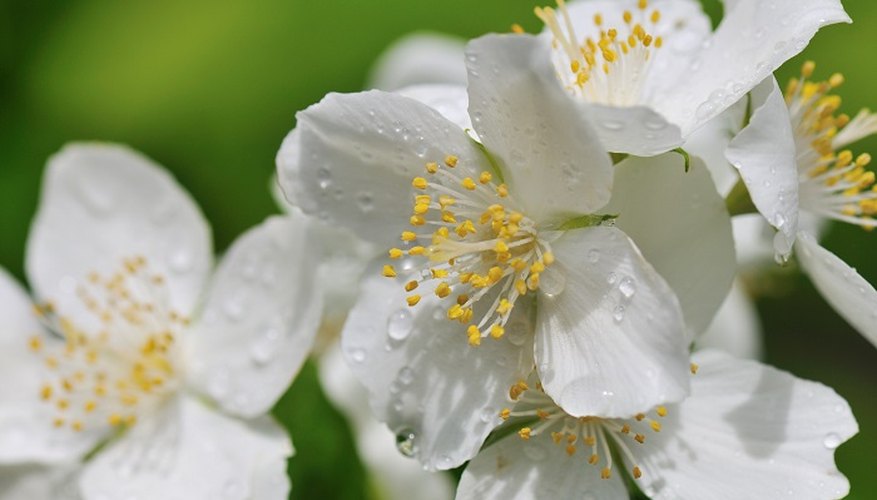Philadelphus lewisii is also called Lewis' mock orange or sweet orange. Captain Meriwether Lewis collected the plants and loved their sweet fragrance. Mock orange can grow from 90 cm to 3 metres (3 to 10 feet) tall and will flower from May to July. The small white flowers are heavily scented and bloom in clusters of three to 15. Philadelphus is tolerant of a wide range of soils, is pest and disease-free and can grow in shade or sun. It is an adaptable plant with few problems
Size and shape
Philadelphus lewisii is considered a shrub but can grow up to 3 metres (10 feet) tall. The plant may be bought as a small shrub and planted in an area that needs a diminutive plant. The growth will come as a surprise and will not fit into planting schemes. Additionally, mock orange can be either erect or spreading. The shrub's natural growing habits will make it difficult to fit into some garden scenarios.
- Philadelphus lewisii is considered a shrub but can grow up to 3 metres (10 feet) tall.
- The plant may be bought as a small shrub and planted in an area that needs a diminutive plant.
Allergen and poison
Philadelphus lewisii has a very strong orange blossom scent. It may be an irritant to people with sensitive noses. The mock orange is classified in the Pollen Library as being a mild allergen. Significant difficulties do not occur, but the plant's pollen and scent can be responsible for mild hay fever reactions. Mock orange is toxic to cats. Other domestic animals and humans will not have problems, but the feline members of the family should be kept away from Philadephus lewisii.
- Philadelphus lewisii has a very strong orange blossom scent.
- Significant difficulties do not occur, but the plant's pollen and scent can be responsible for mild hay fever reactions.
Blooming problems
If your Philadelphus lewisii is not blooming, it is probably due to a nutrient deficiency or because it has not been pruned. Mock orange blooms on twigs from the previous season. It's important to prune landscape plants after they bloom so they can push new growth, which will be the plant's bloom sites the following year.
Animal fodder
Philadelphus lewisii can get severely eaten in rural settings. Rabbits, deer, mice and voles enjoy the tender twigs and leaves, as well as the blossoms. Pest repellents can have some effect and can be chemical, mechanical or natural. While the plant is attractive to pests, it also draws honeybees and butterflies when it is in bloom.
- Philadelphus lewisii can get severely eaten in rural settings.
- While the plant is attractive to pests, it also draws honeybees and butterflies when it is in bloom.
